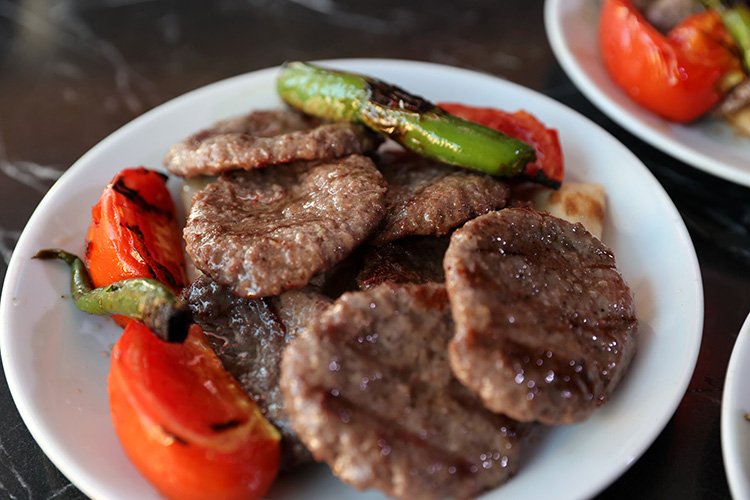Sivas Meatball is a traditional type of meatball unique to Sivas province, prepared solely from beef or lamb leg meat, without any additives, and cooked on a grill. Only salt is used in its production; ingredients like spices, flour, and onions are not included. Thanks to the physical structure of the meat and the processing method, the product exhibits a distinct flavor profile despite its simple ingredients. The product was registered with a designation of origin in 2011 and is produced only within the borders of Sivas province, in accordance with defined methods.

Sivas Köftesi (AA)
Origin
Sivas Meatball is produced using traditional methods in Sivas, one of the important cities in the Central Anatolia Region. This meatball, prepared with the same simplicity for many years in the region, reflects the processing and consumption habits of the local people regarding meat products. The origin of the dish is particularly related to the meat-based nutrition culture of communities engaged in animal husbandry. The production method has been passed down from generation to generation.
Geographical Indication and Designation of Origin Certificate
Sivas Meatball has been registered as a designation of origin under the Industrial Property Law No. 6769. The registration application was made by the Sivas Chamber of Commerce and Industry on February 1, 2006; the product was registered by the Turkish Patent and Trademark Office on January 31, 2011. The product has been recorded under Registration No. 140.
The registration stipulates that the meat used in the production of Sivas Meatball must be obtained from animals fed with natural grasses in the Sivas highlands, that it must not contain any additives other than salt, and that the cooking method must be over oak charcoal embers.
Sivas Meatball Recipe
Ingredients
- 1 kg beef (preferably male calf meat raised in Sivas highlands)
- Salt (natural spring salt extracted from Tuzlagözü Village, Zara district, Sivas province)
- For serving: tomatoes, green pointed peppers, Sivas pita bread
Preparation
- Meat Preparation: The meat, obtained from the rib, leg, and shoulder regions of a calf at least two years old, and from the leg portion of a lamb, is completely cleaned of nerves, veins, and membranes.
- Minced Meat and Salting: The cleaned meat is mixed with 20 grams of natural spring salt per kilogram and passed through a meat grinder once at a medium thickness. The mixture is kneaded once without using additives and rested in a cool place or refrigerator for at least 12 hours.
- Second Grinding and Shaping: The rested meat is passed through the meat grinder again to achieve a homogeneous consistency. The resulting mixture is shaped into oval pieces, each weighing 25 grams, with a diameter of 6-7 cm and a thickness of 0.5 cm, using the palm of the hand. When shaping, the hand should be slightly moistened; it is important not to use too much water.
- Cooking: The prepared meatballs are cooked evenly on both sides by turning them at short intervals over flameless, intensely glowing oak charcoal embers. Cooking is complete when the inside of the meat is not dried out, and the outer surface starts to turn dark brown.
- Serving: The meatballs are served hot on Sivas pita bread, accompanied by roasted tomatoes and green pointed peppers. Often, alongside these, dried onions, sumac-parsley salad, tomato paste, and various greens are also offered.
Cultural Significance
Sivas Meatball stands out as one of the fundamental elements of the region's cuisine. The simple method used in its production reflects the traditional Sivas culinary culture. The geographical indication registration aims to preserve and promote this cultural value of the product. It is widely served in local restaurants and preferred by visitors to Sivas. It is also a registered product that contributes to regional gastronomy tourism.


